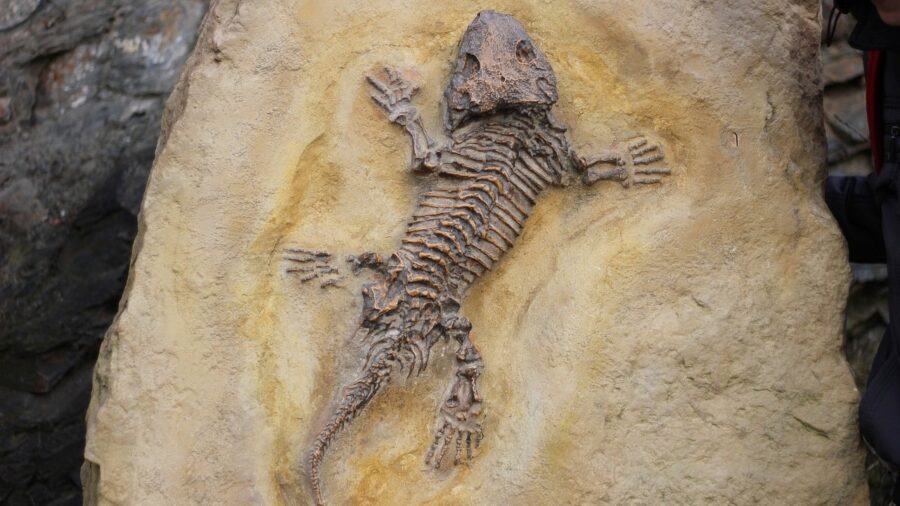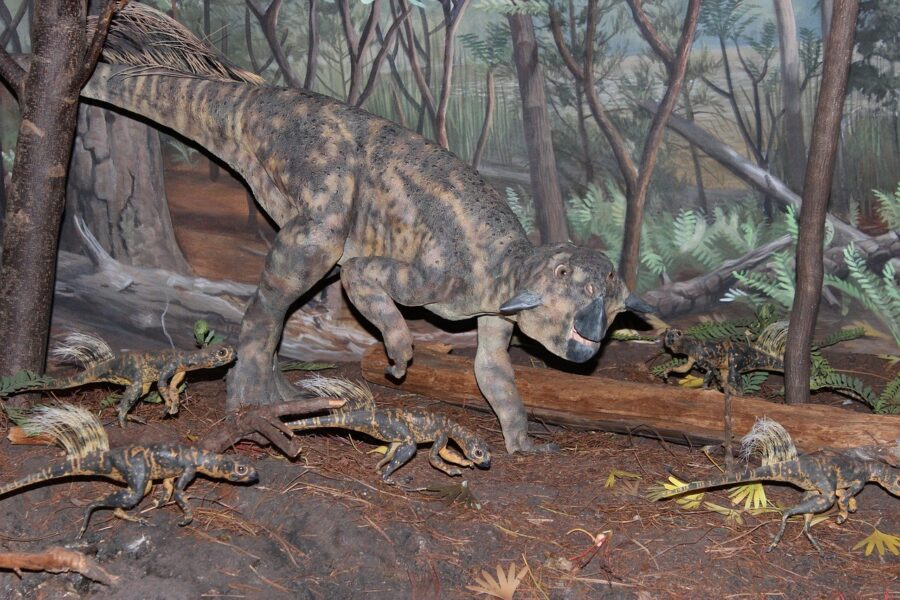Unearthed Fossil Captures Prehistoric Mammal Fighting For Its Life

Scientists have unveiled an astonishing 125 million-year-old fossil that depicts an intense struggle between a badger-like mammal called Repenomamus robustus and a species of plant-eating dinosaur known as Psittacosaurus. The snapshot was so astounding that researchers conducted several tests to ensure it wasn’t fake.
Fossils discovered in China depict a battle between a prehistoric mammal and a herbivorous dinosaur.
According to Jordan Mallon, a paleobiologist and research scientist at the Canadian Museum of Nature, this dramatic moment challenges the notion that the earliest mammals merely existed in the shadows of dinosaurs. “The mammal preserved here is among the biggest mammals of the time, and you’re talking about an animal the size of a house cat. They didn’t get any bigger than that,” he said.
“And there was very little overlap in size between mammals, which were, you know, orders of magnitude smaller, and dinosaurs, which were an order of magnitude bigger,” Mallo, who coauthored the new study of the fossil, published in the journal Scientific Reports, added.
Since fossil forgeries are a significant issue, Mallon and his colleagues, along with researchers from China’s Hainan Vocational University of Science and Technology, took extensive measures to verify the authenticity of the find.
“The mammal preserved here is among the biggest mammals of the time, and you’re talking about an animal the size of a house cat. They didn’t get any bigger than that.”
-Jordan Mallon, Canadian Museum of Nature paleobiologist and research scientist
They carefully examined the surrounding soil of the fossilized bones, ensuring that the Repenomamus robustus mammal had bitten into the Psittacosaurus lujiatunensis dinosaur.
Their investigation confirmed the validity of the bite. Additionally, by comparing the fossil’s rock with the area where it was discovered in northeastern China, they reached a near-certain conclusion that it was genuine. The discovery is groundbreaking because no fossilized evidence had previously showcased a mammal engaging in combat with a dinosaur.
In January 2005, the remains of a Psittacosaurus were found in the stomach of a Repenomamus robustus. The discovery proved that early Mesozoic mammals preyed on dinosaurs and may have fed on vertebrates.
Mallon pointed out that such fossils help understand ancient ecosystems better, as bones alone cannot always provide the complete story. Although the finding raises questions about the circumstances of their deaths in the midst of battle, it still provides valuable insights into the periods when dinosaurs and mammals shared the Earth.
Interestingly, the fossil discovery is not the first evidence of early mammals preying on dinosaurs. In January 2005, the remains of a Psittacosaurus were found in the stomach of a Repenomamus robustus. The discovery proved that early Mesozoic mammals preyed on dinosaurs and may have fed on vertebrates. But it was not possible to determine if it hunted live dinosaurs or scavenged dead ones.

The remains of the Psittacosaurus were found on the left side of the Robustus fossil, under the ribs in the area of its stomach, and were described as fragmented. According to scientists, the Repenomamus robustus is one of the largest known Mesozoic mammals, with an estimated mass of between four and six kilograms.
Meanwhile, the Psittacosaurus is a genus of extinct ceratopsian dinosaurs that lived approximately 126 to 101 million years ago during the Early Cretaceous period. Its body was not particularly thick, and it was a small bipedal dinosaur, measuring about 6.5 feet (two meters) in length. The creature is believed to have been an herbivore, with its mouth shaped like a beak for feeding on vegetation.
The Psittacosaurus is known for being the most species-rich non-avian dinosaur genus of which there are two known species found in China, Mongolia, Russia, and Thailand.
Some fossils of Psittacosaurus have been found preserved with long filaments on their tails, similar to those of Tianyulong. Its name was derived from Greek and Latin, meaning “parrot lizard” due to the unique shape of its head.












